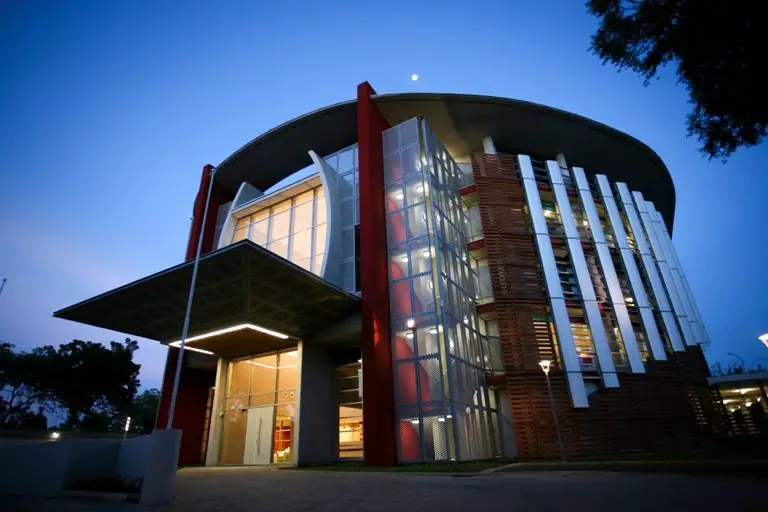The new World Bank offices in Ghana are situated on Independence Avenue in the Ridge suburb of Accra. The construction project was a combination of Co-Arc International, OOA, ARUP’s design concept and development, where the whole design team worked together to optimize solutions. This approach was based on their regional experience of green buildings in similar climatic conditions and in an African context.
Design Innovation
Designed to accommodate two different entities within the World Bank Group, the World Bank offices in Ghana reflect the culture of the global group within a local context, whereby a shading screen wall over the four-storey structure is detailed to form a contemporary interpretation of traditional Ghanaian Kente Weaving culture, thus adding cultural and regional expression to environmental aspects of design.
The World Bank offices in Ghana are built in an urban context on a tropical climate, where an environmentally friendly design was incorporated with the use of proximity lighting, solar water heating, recycled material in elements such as carpets and recycled water treated for flushing toilets and irrigations. The approach to green building was sustained when it comes to this development, as evidenced in theinnovative use of existing bricks from demolished houses were used to build the children’s playground, while existing trees were also protected. The use of local timber decking as shading and screen mimics the rich flavor of the local architecture, whereby climatic conditions will be reduced through passive means.
The facility enables the functioning of a global organisation by providing state of the art potential for communication in IT and conferencing. Positioned with modern system furniture, the pliant office environment provides a contemporary working environment, were both permanent missions and visiting missions are accommodated.
Challenge Faced
“The building is for a world class office facility, but built with due consideration of locally available construction technologies.Procurement challenges related to West Africa were faced along with the need to meet the developmental and environmental policies of the World Bank Group” said Martin Orthner the Managing Director for OOA and the local architects for the development.
Landscape
The shape and form of the building has been specifically designed to optimize the use of natural systems. The entire building, although apparently grounded, is actually sited above ground, permitting the natural sea breezes to cool the building by way of convection through the courtyard and between the sunscreens and the building. Visitors to the site have already noticed the cooling effects of the cool shaded air moving through the courtyard. The layering of façade elements contributes to this. Adds Martin
The roof projections and screens used to shade the building encourages sufficient daylight, which give the entire building a self-shade with its overhangs, while the Nim tree preserved in the middle of the building structure stands as a focal point to the entire building. To prevent heat build-up around the courtyard, double glazed timber windows in 600mm thick cavity walls are installed to shade the glaze from sunlight, same applies on the outside where a full height of double glaze was thermally broken were full glazing shade is given by the screens.
Conclusion
This A-grade green building project has definitely set a benchmark in the region of green building, with the combination of full height double glazing, projections, screens, shelves, splayed ceilings and light colored also reflective surface finishes has substantially increased the daylight in a manner which prevents contrast and glare and reduces the need for artificial lighting. Using locally produced sustainable hardwood decking for sun screening, pergolas, security screens, and external decking is what makes this building unique. Built in a challenging climate area, this superior quality office space offers comfort, security and operational resilience which was expected by the IFC and is an example of the innovative use of sustainable material.

